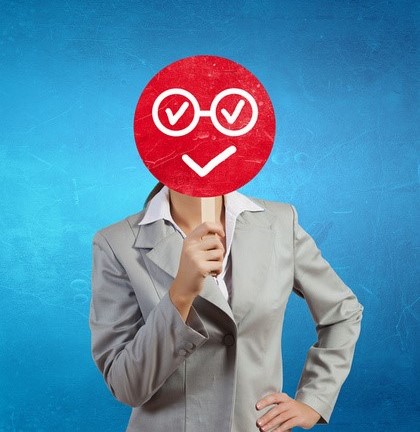Bias

Bias is a prejudice toward one thing, person, or group compared with another. Bias is part of human evolutionary wiring designed to originally keep us safe and secure in unknown and harmful environments. However, while the world has evolved some of our biases – conscious or unconscious – have not, and thus can result in harmful perspectives, decisions, and actions toward individuals and organizations.
Examples
Among Minnesota’s top paid public company CEOs, two are people of color; four are women
Diversity in top ranks has grown just incrementally. By Patrick Kennedy Star Tribune AUGUST 4, 2020 — 8:15AM Pledges for increased diversity in…
Learn MoreHow Diversity Makes Teams More Innovative
Hard data proves that diversity leads to better, more creative ideas. Are diverse companies really more innovative? Rocío Lorenzo and…
Learn MoreBias and pay
How one individual's experience changed the nation. In the late 1970s, Goodyear hired Lilly Ledbetter to work as a supervisor…
Learn MoreHow to talk (and listen) to transgender people
Gender should be the least remarkable thing about someone, but transgender people are still too often misunderstood. To help those…
Learn MoreHow to get serious about diversity and inclusion in the workplace
Imagine a workplace where people of all colors and races are able to climb every rung of the corporate ladder…
Learn More3 ways to be a better ally in the workplace
We're taught to believe that hard work and dedication will lead to success, but that's not always the case. Gender,…
Learn MoreHow to keep human bias out of AI
Artificial intelligence (AI) algorithms make important decisions about you all the time -- like how much you should pay for…
Learn More3 ways to spot a bad statistic
Sometimes it's hard to know what statistics are worthy of trust. But we shouldn't count out stats altogether. Instead, we…
Learn MorePractical Guidance
Self-Serving Bias
The self-serving bias causes us to see things in ways that support our best interests and our pre-existing points of view. https://www.youtube.com/watch?v=-HVaJt3xicM
Learn MoreOverconfidence Bias
The overconfidence bias is our tendency to be more confident in our ability to act ethically than is objectively justified by our abilities and moral character. https://www.youtube.com/watch?v=RCA0yxdedNU
Learn MoreImplicit Bias
Implicit bias exists when people unconsciously hold attitudes toward others or associate stereotypes with them. https://www.youtube.com/watch?v=OoBvzI-YZf4
Learn MoreFundamental Attribution Error
Fundamental attribution error describes how, when judging others’ actions, we tend to give too much causal weight to their character and not enough to the circumstances in which they acted. https://www.youtube.com/watch?v=AdrDAik86rc
Learn MoreConformity Bias
Conformity bias refers to our tendency to take cues for proper behavior in most contexts from the actions of others rather than exercise our own independent judgment. https://www.youtube.com/watch?v=h9McrEaovuM
Learn MoreHow reverse mentorship can help create better leaders
Employee diversity and inclusivity are important business goals. "Reverse mentorship" matches junior employees with more senior staff to become more aware of diversity and inclusion issues. In this video from TED, Patrice Gordon provides six tips to make reverse mentorship work. https://www.ted.com/talks/patrice_gordon_how_reverse_mentorship_can_help_create_better_leaders
Learn MoreThe difference between being not racist and antiracist
There is no such thing as being "not racist," says author and historian Ibram X. Kendi. In this vital conversation, he defines the transformative concept of antiracism to help us more clearly recognize, take responsibility for and reject prejudices in our public policies, workplaces and personal beliefs. Learn how you can actively use this awareness to uproot injustice and inequality in the world -- and replace it with love. (This virtual interview, hosted by TED's current affairs curator Whitney Pennington Rodgers and speaker development curator Cloe Shasha, was recorded June 9, 2020.) https://www.ted.com/talks/ibram_x_kendi_the_difference_between_being_not_racist_and_antiracist This video is shared under a Creative Commons…
Learn MoreHow Racial Bias Works and How to Disrupt It
Our brains create categories to make sense of the world, recognize patterns and make quick decisions. But this ability to categorize also exacts a heavy toll in the form of unconscious bias. In this powerful talk, psychologist Jennifer L. Eberhardt explores how our biases unfairly target Black people at all levels of society -- from schools and social media to policing and criminal justice -- and discusses how creating points of friction can help us actively interrupt and address this troubling problem. https://www.ted.com/talks/jennifer_l_eberhardt_how_racial_bias_works_and_how_to_disrupt_it
Learn MoreHow to Design Gender Bias Out of Your Workplace
Simple changes can give big results Equity expert Sara Sanford offers a certified playbook that helps companies go beyond good intentions, using a data-driven standard to actively counter unconscious bias and foster gender equity -- by changing how workplaces operate, not just how people think. https://www.ted.com/talks/sara_sanford_how_to_design_gender_bias_out_of_your_workplace This video is shared under a Creative Commons license (BY-NC-ND 4.0). Please visit Ted.com. This TED Talk originally took place at TEDxSeattle, an independent event.
Learn MoreBlind spots: Challenge assumptions
Our brains are wired to make assumptions, which can sometimes be off base. We think it's an honest mistake; science calls it a blind spot. https://www.youtube.com/watch?v=BFcjfqmVah8 This video was used with kind permission of PwC. June 23, 2017.
Learn More
